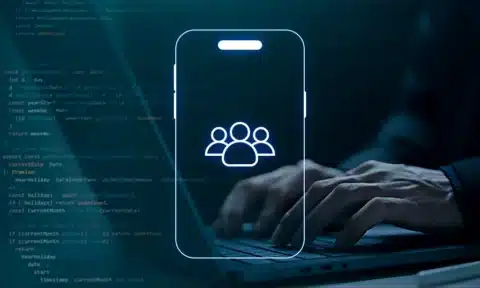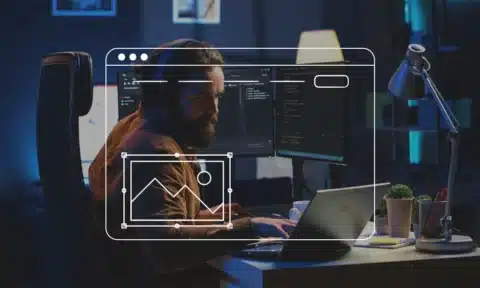Have you ever wondered what the best practices are for protecting your code?
Knowing which one is the best can be hard, with so many different ways to protect your code. Now you’ll never have to worry about whether or not someone is going to steal your work!
That’s why we’ve put together this blog post with various information that will help you protect your code.
So whenever you’re ready to learn the principles of secure coding and its effects, keep reading.
What Is Protected Coding?
Protected coding can be defined as the process of protecting your code and making sure that all files are in a secure location. This means ensuring that you don’t put passwords, social security numbers, or financial information into any programs unless encrypted.
Protecting your code also includes not storing sensitive data on shared drives where other people have access to them, so only store these types of things when you need to use another person’s computer for work purposes.
For example, if someone has been using your machine before and had no knowledge of what was saved there (including their username), everything will show up once again on their desktop with one click!
Why Is It Important to Protect Your Code?
It’s important to protect your coding because it could be the key to protecting yourself from hackers. If you don’t take any precautions, then there is a high possibility that someone else will steal your code and use it for their purposes – even if they don’t know what they are doing.
Protecting your programming can also help ensure that no one has access to sensitive information like passwords or social security numbers before its time. Furthermore, it can also keep hackers from taking your code and doing something malicious with it.
It’s important to protect your coding, as the last thing you want is for someone else to be able to use it without permission!
Access Control
Access Control is the process of controlling who has access to what. one can do this by ensuring that you have a certain type of password and username on your devices for others do not get into any sensitive data.
You should also ensure that you don’t store anything like passwords or financial information on shared drives where other people have access to them because it could potentially lead to someone gaining control over all these types of content!
In addition, when using remote workstations (like at home), use an encrypted program such as BitLocker, so nobody else will know what’s going on with your computer.
Lastly: never leave default credentials configured anywhere – even if they are just temporary accounts – because this is a common entry point for hackers.
Potent Encryption
Potent Encryption is when someone encrypts something with a key. One can do this for a file, email message, or any other type of content that one want to keep private and secure. It’s also important to ensure the encryption method doesn’t have flaws – if it does, hackers could easily break in!
In addition: don’t forget about two-factor authentication so nobody else will be able to steal your password from another location or by guessing!
Please enter the security code (usually sent through an app on your phone) whenever they try logging into anything. With this protection enabled, nobody will ever gain access without permission even if they know the username and password because there are too many hoops to jump through first.
The best encryption types for code are the ones that are not just algorithms, and the type of algorithm is determined by what it’s going to be used for.
The encryption can also be done with an RSA key, where if a hacker guesses your password or finds out your private key (AKA decryption), they won’t gain access because there will always be two keys required!
It is important to protect code against hacking attempts to keep yourself and others safe – so never leave anything unprotected!
Managing Secrets
It’s important to protect your coding by managing secrets. This means using BitLocker to keep all of the information private and secure with a “How do I unlock this?” type of key.
If you don’t want other people to access anything sensitive, then make sure that you are storing any passwords or social security numbers on an encrypted device to which nobody else has access!
This is also why two-factor authentication is so popular – as long as someone doesn’t have both pieces (usually their password and code), they won’t get past the first step into your accounts. And if they know what either one is, it’ll take them way too much time trying every combination until they finally get it.
In addition, never leave default credentials configured anywhere – even if they are just temporary accounts! This is usually the first place that a hacker will access your account because nobody else would know about this secret spot.
The last thing you want to do is get hacked and not be aware of what’s happening until you find out someone stole all your information or money, so don’t let others take advantage of an unprotected code!
Code Minification
Code minification is when a developer takes the code and makes it smaller not to take up as much storage space. One can do this to make your site load faster, which will help improve customer experience!
It’s important not to over-minify because some of the programs might get lost or changed if you do this – but there are other ways to keep optimizing and improving performance without losing anything!
Minification is useful because it can help with optimization and performance – but don’t overdo it because you might lose information or make the code harder to read.
If you want a smoother experience for your customers, use this trick to keep them coming back!
Avoid Code Shortcuts
Code shortcuts are when a developer uses something like an “if” statement to make the code smaller and more efficient – but this can be hazardous if you don’t know what it does!
Don’t use shortcuts that you don’t understand because they might not work as expected or do something unintended. This could take weeks of your time trying to figure out what’s going on, so always check with someone who knows programming before doing anything too complex.
Double quotes vs. single quotes are super important in coding. So remember this simple trick for big results without all the hassle! It makes sure that there aren’t any weird spaces left over at the end of strings, preventing errors during runtime.
Keep your code clean and make sure you understand what you are doing because shortcuts can be dangerous if not done right.
Never use any shortcuts unless you know how they work. Research with someone who knows programming before using anything complicated!
Automated Code Scans
To keep your code safe, you’ll want to use automated code scans. These are great because they check for any issues during runtime and give suggestions on how best to fix them before it’s too late!
Automated code scans will ensure that there aren’t any glitches or errors while the program is running – so take advantage and catch these problems sooner rather than later.
If you don’t know what would cause this problem, then an automated scan can help tell you about potential security risks before anything gets out of hand. This way, instead of scrambling around with no idea where a bug might have come from, we can already be using one strategy versus another, which may not work as well.
The last thing you want to do is get hacked and not be aware of what’s happening until you find out someone stole all your information or money, so don’t let others take advantage of an unprotected code!
To keep the coding safe, it would be best for a developer to use automated code scans to check for problems while the program is running. If there are any glitches or errors, an automated scan will tell us before anything gets too bad.
This way, we can deal with potential security risks sooner than later. The last thing anyone would want is to get hacked because they didn’t know about their vulnerability without looking into things themselves first, which means using these scanners to ensure that the code is safe.
Logging and Auditing
Logging and auditing are two things that developers need to do to keep the coding secure.
First, logging is used to see what’s going on with your code while it’s running. This will help if any errors or mistakes are happening. Logs also allow other users to examine them and find out what went wrong without having too much problem sorting through anything themselves!
Second, auditing tells us how well our program works by ensuring that everything we have created works correctly. This way, we’ll know where problems lie before they happen, which means dealing with these issues sooner rather than later when they have already gotten worse!
It’s always important for developers to log their work to ensure that everything is being done correctly. This will help if any mistakes are happening or problems with the code while it’s running, which means we’ll be able to deal with these issues sooner rather than later, preventing them from getting worse and causing more of a problem in the process.
Auditing also ensures that your program is working properly by looking for errors before they happen so you’ll know where potential security risks may lie beforehand. This way, we can take care of things sooner instead of when they’re already a big issue!
We want developers to log their work and audit their programs to ensure that nothing bad happens during runtime because, without these two things, someone could get hacked or have all their information stolen, making it important for us to take all the precautions we can make so that it doesn’t happen in the first place.
Avoid Common Component Vulnerabilities
There are many common vulnerabilities in components, and some of the more popular ones include SQL injection.
This vulnerability occurs when malicious SQL code is injected into an application’s database to access data without authorization from its owner – which can make for one big problem!
To keep our coding safe, it would be best to avoid these types of vulnerabilities that could mess up everything with just the click or tap of a button because they’re straightforward to get rid of once you know about them.
It may sound like overkill, but by avoiding this type, things won’t happen as easily as before, and at least there’s something out there making sure that nothing bad happens again.
Good developers will want to avoid these vulnerabilities because they could cause problems with everything and make it hard for us to keep our coding secure.
Source Code Secured
In conclusion, a developer needs to take all the necessary precautions to keep their code secure.
They should avoid common component vulnerabilities and log and audit any problems they may find while the program is running. Otherwise, there could be some major consequences that would make things difficult in the long run!
Protect your code by knowing what you need to do before anything gets too bad so that nothing can happen because of it – these are just some simple steps we want developers to follow when working on their projects.
If you’re interested in full-scale secure application development, get in touch with us, and we will happily accommodate your needs.



